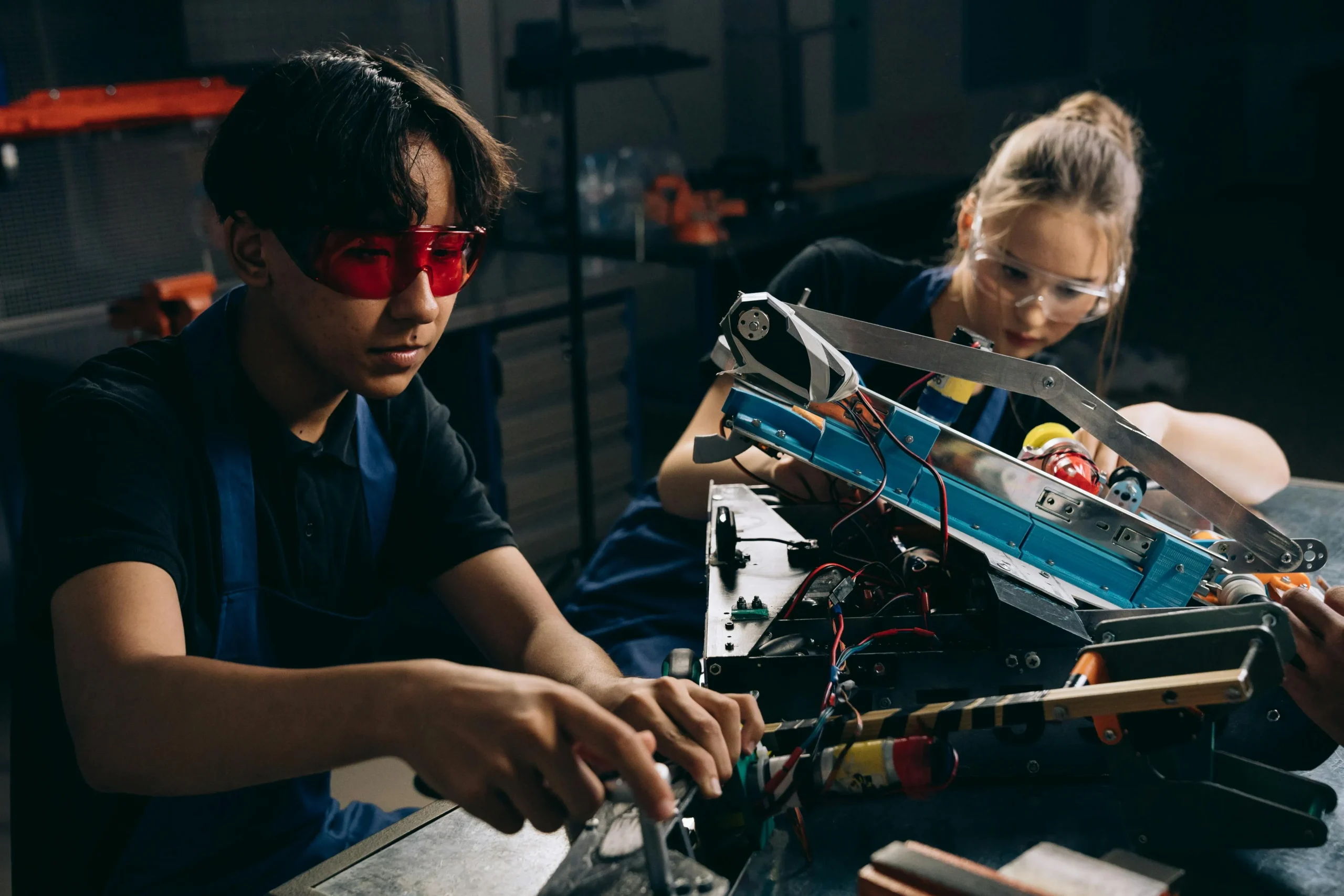Picture a classroom in which the trainer is already aware of what you are properly in and in which you need help, and the training is done just for you, so no one is left behind.
This is not a futuristic dream. It’s the reality that artificial intelligence (AI) is creating in education today. From simplifying lesson plans to revolutionizing how students learn, AI is changing everything. Let’s explore how.
Smart Classrooms: Where Learning Meets Technology
The smart classrooms use artificial intelligence to add interactive boards, voice recognition, and facial analysis, allowing the teachers to monitor student engagement. These technologies don’t just make the classroom. They make it more efficient.
As an example, a school in India has recently integrated an AI system that monitors children and relays to the system whether they are interested or confused by what they see during the lesson based on their facial expressions. The system would cause teachers to speak more slowly or in a different way when students are confused. That is the customer service management of customer services at its best, only in the classroom.
Personalized Learning for Every Student
Not all students learn at the same rate. There are learners who understand things immediately and others who take time to learn and require assistance. Platforms that use AI study the ways students respond to the content. They see how much time they devote to one question or another, where they go wrong, and which lessons are the most appropriate.
Consider the case of schools in Pune where an AI-based learning system has been recently introduced among the students of the middle school. Teachers observed that many students were struggling in science, especially physics. The AI platform allowed the school to monitor the learning patterns of each student and recognize some areas that particular students required.
This type of customer data management is in full display in this form of learning customization. Similar to how companies are customizing services based on customer data, AI will enable a student-customized education journey based on student data.
Teachers Get a Helping Hand
The job of a teacher can be very exhausting. A teacher has their hands full planning the lessons and assigning objectives, grading papers, monitoring the behaviors of students in their respective classes, and taking care of administrative duties. But in today’s times, artificial intelligence is entering into play in order to make things more manageable.
AI is making it easier to do everyday work. It has the ability to automatically mark assignments, answer frequently asked questions, and even facilitate communication with parents on a routine basis.
Even in certain schools, lesson plans are being prepared using AI, which analyzes curriculum, performance, and feedback. This has made preparation time go down by nearly 40%, enabling the teachers to spend more time guiding the students and less time buried in paperwork.
Breaking Barriers: Education for All
Accessibility is another powerful benefit of AI in classes. The traditional learning environment is usually a problem for students with disabilities. These gaps exist nearest to AI tools such as speech to text converters, real time translation, and image recognition.
Take the instance of Raj, a Mumbai student who’s visually impaired. He has won admission to his classes in real time, stepped forward his voice, and actively contributed to discussions within the lecture room with the useful resource of an AI-pushed display screen reader and voice assistant. That is the future of inclusive learning, and it is currently taking place.
Real-World Results: A Case Study Snapshot
A government-backed school cluster in Maharashtra to roll out a customized AI learning solution across 10 secondary schools. Over a period of 9 months, here’s what they achieved:
- Student engagement increased by 45%
- Test scores increased by 20%
- Teachers reported a 25% reduction in admin workload
- Parent satisfaction improved by 35%
The real magic? It was not simply the AI tool. This is a holistic approach seamlessly blending modern day technology with the experience of teachers and the help of nearby administrators.
Stats That Speak
Here are a few quick stats that display how quickly AI is growing in education:
- 86% of educators trust AI will be a part of coaching by 2030
- The AI in education market is anticipated to hit $20 billion by way of 2027
- Schools using AI for personalized learning saw up to 35% improvement in academic performance
(Visual idea: A bar graph showing academic performance improvement with and without AI.)
Digital Transformation in Action
Schools implementing AI tools do not simply experiment with new gadgets. They implement the entire digital transformation solutions. These consist of online remote learning services, AI automatic grading programs, predictive analytics of student outcomes, and even AI-based tools such as scheduling.
Just like companies are getting digital makeovers in order to reach their customers in a better way, schools are changing to serve their students in a better way. Artificial intelligence, as such, is not an educational robot but a helpful assistant to make the instructor more efficient.
Final Thoughts: What’s Next?
It is better, more welcoming, and much more connected. Artificial intelligence is transforming the learning practices of students, the teaching of teachers, and schools. As long as we keep investing and wisely utilizing data, we are in an educational future where every child is getting ahead.
So, whether or not it is customer service management to cope with student wishes, customer data management to personalize learning, or virtual transformation solutions to streamline operations, AI is no longer only a tool; it is a partner in shaping the future of education training.
Platforms like Aestrax are already teaching the rate, offering smart, integrated answers that help colleges and institutions embrace the strength of AI effects.
And the best part? The future classroom isn’t in the distant future. It’s already knocking at our school doors.
